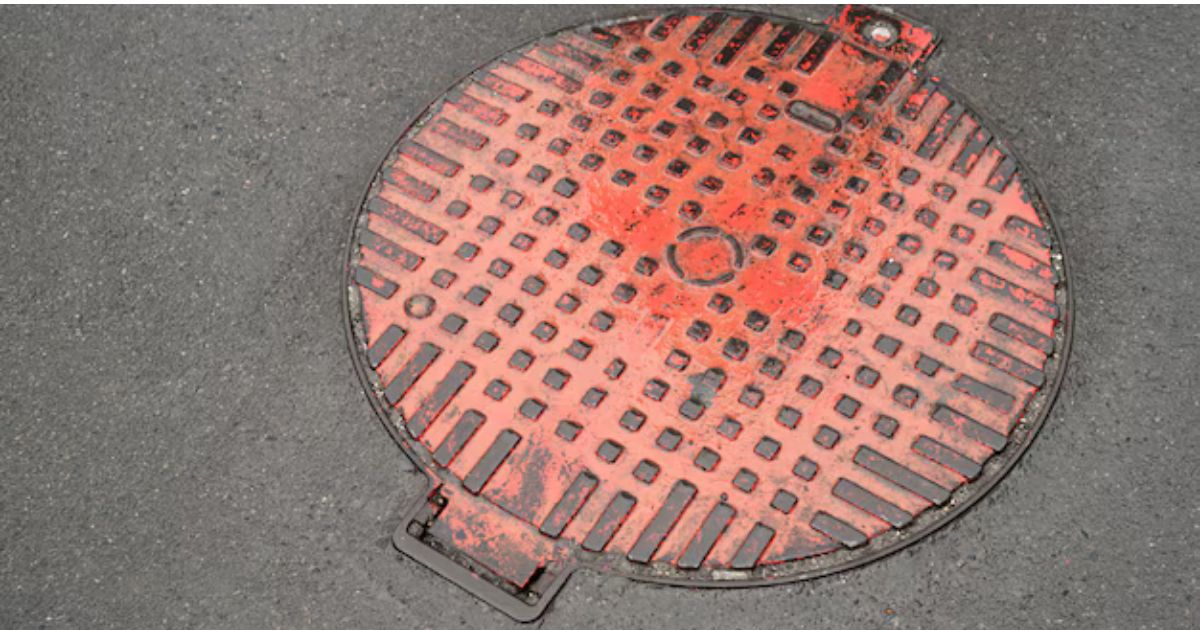LifeStyle
Manhole Covers: Essential Urban Infrastructure Explained

LifeStyle
Protect Your Natural Hair with Glueless Lace Wigs by Fysin Hair

In the quest for flawless beauty, many women unknowingly compromise the health of their natural hair. From excessive heat styling and chemical treatments to tight weaves and adhesive-based wigs, the journey to perfect hair often leaves real strands weak, brittle, or damaged. Fortunately, there’s a game-changing solution that allows you to look stunning while giving your hair a break: glueless lace wigs from Fysin Hair.
Fysin Hair has become a trusted name in the world of wigs, blending premium quality, comfort, and style into each product. Their glueless lace wigs offer a safe, stylish, and convenient alternative that not only enhances your appearance but also protects and preserves your natural hair underneath.
The Hidden Damage of Traditional Styling Methods
Many popular hair styling methods—such as glue-in wigs, tight braids, sew-ins, and frequent use of flat irons—can lead to long-term damage. These techniques often result in:
- Thinning edges
- Scalp irritation
- Hair breakage
- Traction alopecia
- Heat and chemical damage
Over time, even the healthiest hair can suffer if it’s not given time to rest and recover. That’s why protective styling is so essential—and glueless lace wigs have quickly become one of the most effective and stylish forms of protection available today.
What Are Glueless Lace Wigs?
Glueless lace wigs are designed to be worn without glue or adhesive. Instead, they rely on adjustable straps, combs, elastic bands, or innovative drawstring systems to stay securely in place. These wigs offer all the beauty and realism of traditional lace wigs, but with none of the mess or potential harm to your scalp and hairline.
Fysin Hair takes this concept to the next level, creating glueless lace wigs made from 100% human hair, complete with breathable lace, pre-plucked hairlines, and ultra-natural finishes. Whether you’re new to wigs or a seasoned pro, Fysin Hair’s designs make it easy to look fabulous while prioritizing your hair’s health.
How Glueless Lace Wigs Protect Your Natural Hair
Let’s explore the ways Fysin Hair’s glueless lace wigs offer unbeatable protection for your real hair:
1. No Glue = No Damage
One of the biggest advantages of glueless wigs is avoiding harsh adhesives. Glue can cause skin irritation, clogged pores, and worst of all—hair loss, especially around the delicate edges. With Fysin Hair’s glueless lace wigs, you eliminate that risk entirely, preserving your natural hairline and promoting healthy growth.
2. Minimal Tension on Hair and Scalp
Tight hairstyles, especially braids or sew-ins, put unnecessary tension on your scalp and roots. Over time, this can cause thinning and even permanent damage. Fysin Hair’s wigs are lightweight and adjustable, allowing for a snug yet gentle fit that won’t strain your scalp.
3. Protective Styling with Breathability
Glueless lace wigs act as a barrier between your natural hair and external damage—from weather elements to pollution and daily manipulation. At the same time, the breathable lace cap ensures that your scalp stays ventilated, reducing the risk of sweat and product buildup.
4. Freedom to Moisturize and Care for Natural Hair
Unlike sewn-in or glued wigs that restrict access to your scalp, glueless lace wigs are easy to remove and reinstall. This allows you to maintain a healthy scalp routine—cleansing, moisturizing, and massaging your hair regularly without compromising your protective style.
Fysin Hair: Your Partner in Healthy Hair Journeys
Fysin Hair is dedicated to helping women achieve both beauty and hair wellness. Their glueless lace wigs, such as the Highlight Brown Water Wave 360 Wig, are not only beautiful but also functional. With features like Invisi Drawstrings, pre-cut lace, and natural baby hairs, Fysin Hair ensures each wig is user-friendly, secure, and realistic—perfect for everyday wear or special occasions.
Whether you’re transitioning to natural hair, recovering from damage, or simply looking for a safe way to switch up your look, Fysin Hair offers a range of styles, lengths, and textures to fit your needs.
Tips for Maximizing Protection with Glueless Lace Wigs
To get the most protective benefits from your Fysin Hair wig, follow these simple tips:
- Braid or wrap your natural hair underneath to reduce friction.
- Use a satin wig cap or silk scarf to prevent breakage and retain moisture.
- Remove your wig at night when possible to let your scalp breathe.
- Cleanse and moisturize your natural hair and scalp regularly.
- Store your wig properly on a stand or mannequin head to maintain its shape and quality.
Final Thoughts
If you’re tired of sacrificing your natural hair health for style, it’s time to make the switch. Glueless lace wigs from Fysin Hair give you the freedom to look your best while allowing your real hair to thrive. These wigs are more than just a beauty trend—they’re a long-term solution for women who value both appearance and hair wellness.
Say goodbye to glue, and hello to healthy hair and effortless glam with Fysin Hair. Because protecting your crown should never mean compromising your style.
LifeStyle
What Every Wardrobe Needs Right Now
There is a mirroring of the unusual climate in the UK, where style is about adaptability and reasonableness. A well-organized closet is essential, one that continually changes between unexpected downpour showers, lively breezes, and uncommon bright spells. The top 7 priority pieces for your essentials hoodie closet will keep you looking a la mode. This essential hoodie uk combines functionality and style, ensuring you’re always dressed appropriately, regardless of the climate. These items will help you navigate the UK’s ever-changing climate with confidence and style, from waterproof outerwear to fashionable options for layering.
Versatile Trench Coat
An overcoat is a timeless item that effortlessly elevates any ensemble. The basics hoodie uk’s quirky climate is perfect for this coat’s sleek and practical design. During those unexpected showers, the water-safe texture keeps you dry, and the lightweight material allows for layering. A fashionable overcoat is an article of apparel. Whether you walk or bike to work, you will use it every day. Everything can be worked out, including using an overcoat’s flexibility. Pair it with a brand-new white shirt and personalized jeans. Wear it with a simple shirt and pants combo if you’re not hiding anything. For a more defined silhouette, you may use a belt to bind the waistline.
Classic Knitwear
Given that it keeps you warm and comfortable during the colder months, knitwear is a must-have item for every UK wardrobe. Texture is important while choosing knitwear. For further protection and delicate quality, choose standard filaments like cashmere or fleece. The basic hoodie UK is perfect for layering because of its breezy yet warm materials. Additionally, look for knitwear with a finer gauge because essential hoodie in the UK will be more flexible and smaller under coverings or jackets. Knitwear is really versatile and goes well with a variety of ensembles. Consider pairing your favorite pair of slacks with a sturdy weave sweater for a carefree end-of-week ensemble. For a look, wear a fine-weave sweater layered over a jacket or coat.
Tailored Trousers
A wardrobe must for both day and night is a pair of tailored pants. The fit of custom pants should be good. It shouldn’t be too tight and should fit comfortably around the hips and midriff. The fix should be long enough to touch the top of your shoes. Essentials hoodie UK If your clothes don’t fit properly, it can be worth going to a designer. Custom-fitted pants have the benefit of being versatile. During the day, shirts with padding and pullovers are popular styles. You can add some bold jewelry and replace the flats with heels for a night out. For a sophisticated look, you may also pair your personalized pants with a jacket or sweater. Every occasion calls for a pair of jeans that fit you well.
Stylish Boots
Exploring the climate, which can be unpredictable and damp, requires a good pair of boots. Look for boots made of water-safe materials, such as elastic or leather. These materials are long-lasting and sturdy in addition to keeping your feet dry. Additionally, consider footwear that have a good grip since essentials hoodies can help you stay consistent on elusive surfaces. Whatever your taste, a trustworthy pair of knee-high boots is essential. Because boots are so versatile, they can be worn throughout the year. For cozy and toasty requirements London in the winter, pair them with thin trousers and thick socks. For a more laid-back look, pair ankle boots with a dress or skirt.
Comfortable Hat
In the UK, an appealing cap is a basic adornment that offers both elegance and practicality. Whether you’re wearing it to shelter yourself from the occasional sun or to combat cold winds, a well-made hat offers comfort all year round. To ensure warmth without overheating, look for caps made of permeable, sensitive materials like fleece or cotton. Plans that can be altered provide a personalized fit, which makes them perfect for daily use. A hat that can easily dress up your basic hoodie UK while still keeping you comfy is a wardrobe staple. Options include a classic beanie, a multipurpose bucket hat, or a beautiful fedora.
Essentials Layering
A key component of UK fashion, especially in light of the country’s windy climate, is layering. The hoodie UK ensures you’re consistently pleasant by allowing you to switch up your daily attire. Add a mid-layer, such as a sweater or pullover, after starting with a base layer, like a shirt or slim weave. Finally, add an outer layer, such as a coat or jacket. The essential hoodies for sale might generate revenue for you. This technique does more than just keep you warm. but also adds depth and interest to your ensemble. Developing your layering skills will help you maintain a stylish and functional closet.
LifeStyle
Quiet Luxury: The Minimalist Fashion Trend Redefining Men’s Style in 2025

Think of Daniel Craig’s James Bond: the suits are so well cut that you notice the man, not the brand. Or a character in a Murakami novel, sipping whiskey in a soft wool sweater that looks like it was made just for him.
Quiet Luxury is all about subtlety and craftsmanship. It’s style that whispers rather than shouts. The kind of elegance that’s felt, not flaunted. It’s less about impressing others, and more about feeling quietly confident in your own skin.
- Fine fabrics (cashmere, merino, silk blends)
- Impeccable tailoring (jackets that drape just right, trousers with the perfect break)
- Muted colors (navy, charcoal, camel, olive)
- Minimal logos—if you know, you know
- Timeless pieces (a perfect white shirt, a soft leather loafer, a cashmere scarf)
Why does Quiet Luxury resonate today? Because in a noisy world, there’s something radically cool about understatement. It says, “I know what I like, and I don’t need applause.” It’s also a nod to sustainability—buying less, but buying better. Pieces that last, both in quality and in style.
There’s a secret handshake among those who recognize, say, Loro Piana cashmere clothes or a perfect suit from MensUSA. It’s about belonging to a club of taste, not trend.
Are “Minimalist” and “Quiet Luxury” the Same?
Minimalism in fashion is about stripping away excess—clean lines, limited color palettes, no unnecessary details. Think of Steve Jobs’ black turtleneck or the simple, sculptural suits of Jil Sander.
On the other hand, Quiet Luxury shares minimalism’s love of restraint, but it adds a secret ingredient: quality that whispers. It’s not just about what you see, but what you feel—fine fabric, expert tailoring, and details only the wearer (or a fellow connoisseur) might notice.
Therefore, all quiet luxury is minimalist, but not all minimalism is quietly luxurious. Quiet luxury is like a whisper of silk lining in a jacket—hidden, but unmistakably special to the one wearing it.
Why Is Quiet Luxury So Resonant Today?
In a world of fast fashion and screaming logos, quiet luxury feels like a deep breath. Logos and obvious brands used to signal wealth or style, but now they can feel a bit… try-hard. Quiet luxury is for those who want to feel good, not just look rich.
People are tired of clothes that fall apart after a few wears or become outdated in a season. When you know your clothes will still look good next year (or next decade), you walk a little taller. Quality pieces last—and that’s better for your wallet and the planet. And, it’s style as a form of self-assurance, rather than seeking approval.
Suits: The Heart of Men’s Quiet Luxury
The suit is the ultimate canvas for quiet luxury—a classic navy or charcoal suit in a beautiful wool, cut just right, is like armor and art at once. It’s the uniform of those who mean business, but also those who appreciate craft.
The Cut: Modern Ease
- Jacket—Slightly relaxed, not too skinny, not too boxy—a gentle silhouette that flatters but never constricts. Think soft shoulders (the Italians call them “spalla camicia”—shirt shoulders) for natural ease.
- Trousers—A comfortable rise and a tailored, gently tapered leg—enough room to move, but never sloppy. A single pleat adds grace and a nod to classic style.
The Fabric: Understated Luxury
- Wool, wool, wool. Super 110s or 120s are sweet spots: smooth, durable, not too precious.
- Color—Navy and charcoal reign supreme for versatility and quiet power. They’re adaptable—formal with a white shirt, creative with pale blue or subtle pattern, and relaxed with a fine-gauge turtleneck.
- Texture—A subtle twill or birdseye weave adds interest without flash.
The Details: Whisper, Don’t Shout
- Lapel—Medium width, slightly peaked or classic notch. Nothing too skinny.
- Buttons—Dark horn or mother-of-pearl—organic, understated.
- Pockets—Flap or jetted—keep it clean.
- Vents—Side vents for movement and a touch of continental flare.
Shirts & Outerwear: The Quiet Supporting Cast
- Shirts—Crisp white for business. Pale blue for softness. Light gray or subtle stripes for variety.
- Outerwear—A single-breasted camel or charcoal overcoat, or a navy mac—timeless, neutral, and fits over your suit without bulking up the lines.
Accessories: The Art of Restraint
- Tie—Understated silk or textured knit, in navy, burgundy, or deep green. No novelty prints.
- Pocket Square—White linen, folded simply. Maybe a subtle navy or gray if you want to whisper a little more personality.
- Shoes—Black or dark brown leather oxfords or derbies. Clean, polished, no ostentatious logos.
- Belt—Leather, slim, matches your shoes. Or skip the belt for a cleaner waistline—especially with side adjusters.
- Watch—Simple, classic face. Leather strap. Heirloom vibes.
A Few Quiet Luxury Staples Beyond the Suit
True quiet luxury is multisensory. The faint scent of good leather, the soft brush of wool, the echo of laughter and low jazz in a warm room, a hint of whisky or cigar smoke curling through the air. That’s not just style—it’s a way of being.
Consider to add to your shopping list the following:
- Navy or gray merino wool crewneck sweater (great over a shirt or under a jacket)
- Fine gauge turtleneck (for that discreet European flair)
- Crisp, heavyweight white T-shirt (for smart-casual)
- Well-fitted dark jeans (minimal distressing)
- Slim chinos in taupe or olive
- Soft cashmere scarf in a neutral tone
Unhurried, grounded, quietly confident. When you wear your suit, let it remind you that comfort and elegance don’t compete; they conspire.
Can You Find Quiet Luxury on a Budget?
- Fabric First
Even affordable brands sometimes offer suits in 100% wool or wool blends. Look for those—synthetics never drape the same way.
- Fit Over Brand
A suit that fits your shoulders and is tailored to your body will look more expensive than any logo ever could. Find a good local tailor; even a modest suit can become a gem with the right tweaks.
- Secondhand & Vintage
Thrift stores, vintage shops, and online platforms (like eBay or Vinted) are treasure troves. Many high-end suits end up barely worn at a fraction of the price. Look for names like Canali, Corneliani, or Brooks Brothers.
- Subtle Details
Quiet luxury means no flashy buttons or wild linings—just well-chosen, simple details. Dark horn buttons, a soft roll to the lapel, pick stitching along the edges.
- Care and Maintenance
Keep it pressed, brush it down, and hang it well. A well-cared-for suit always looks pricier than it is.
Final Needle & Thread
Buy less, choose well, make it last
Quiet luxury is, ultimately, about self-respect and discernment. It’s the confidence of a man who knows that the best things in life don’t need to shout—they just need to last, fit well, and feel right. Anyone—on any budget—can access that spirit, even if it requires a bit of detective work and a tailor’s number in your contacts.
We wish you to find your extraordinary in the understated, and to always dressing for the life you want—quietly, confidently, and with a sense of adventure.
-

 Sports4 months ago
Sports4 months agoThe Ultimate Guide to Ski and Snowboard Equipment, Ski Equipment Rental, and Snowboard Equipment Rental
-

 Entertainment8 months ago
Entertainment8 months agoHulu Error Code Rununk13: A Complete Guide
-

 General7 months ago
General7 months agoStart-094: Unlocking Its Secrets and Understanding Its Power
-

 Entertainment6 months ago
Entertainment6 months agoSoaper.tv: A Comprehensive Guide to Your Streaming Companion
-

 Uncategorized5 months ago
Uncategorized5 months agoOceanofPDF: Free eBooks Source or Copyright Violation?
-

 Games5 months ago
Games5 months agoPizza Edition Games: The Ultimate Guide to Fun and Flavor
-

 Technology8 months ago
Technology8 months agoWhy SBCodez is the Go-To Resource for Aspiring Coders
-

 Apps8 months ago
Apps8 months agoWeb & Store Synergy: The Ultimate Guide to Blogging for E-commerce
